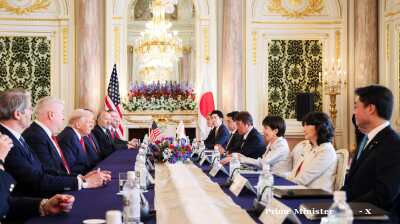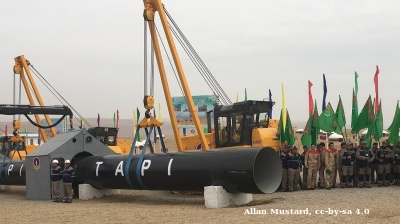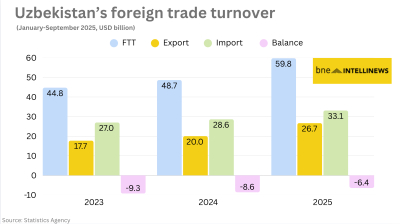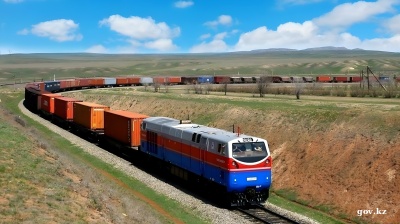Uzbekistan’s gold mining national champion Navoi Mining & Metallurgical Combine (NMMC) has issued its debut $1bn Eurobond on October 10.
The bond consists of a dual-tranche offering: $500mn in 4-year notes with a 6.70% yield and another $500mn in 7-year notes at 6.95%. The funds raised will support NMMC's investment plans, which include expanding its gold production and furthering strategic projects.
The proceeds from the bond will contribute to NMMC’s ongoing investment program, which has seen substantial progress in 2024, including a $281mn investment to increase ore processing capacity. This is part of the company’s broader goal of reaching 10mn tonnes of annual processing capacity by the end of 2024.
The bond is also seen as a step on the path to completing the long-discussed privatisation of NMMC with an eventual IPO and a strategic move to build up the company’s profile with international investors.
Gold mine giant
NMMC operates the Muruntau mine, the world’s largest opencast gold mine and a leading mining complex in Central Asia. The mine was established in 1958 and produces gold and uranium. Located in the city of Navoi, the combine is a cornerstone of the country's industrial and economic development.
The plant is being prepared for privatisation and has hired a number of international consultants to prepare it for a widely anticipated IPO, Nikolai Snitka, the ebullient chief engineer of Navoi Gold, told bne IntelliNews in an extensive interview at the mine in 2021.
“We are the biggest company in the country and the number one contributor of taxes to the government. About 20% of the total tax take is combined money!” Snitka said, who has worked at the mine for almost four decades.
The gold mine has been through four stages of development since it was founded and a fifth development phase is currently underway, due to finish in 2026. The mine got a new lease of life in 2016 when Uzbek President Shavkat Mirziyoyev took over and began a $3bn investment programme.
“The plan is to increase production by 30% by 2026. We are not there yet but we hope to reach the 30% target earlier – in 2024,” says Snitka.
The company has already been reorganised into a joint stock company in preparation for privatisation and a new board of directors appointed. The consultants have been rationalising the books and bringing the corporate practises up to international levels of corporate governance and transparency before a potential listing.
“For 20 years we were a closed company but today it's all changed. We are not that kind of company anymore,” says Snitka. “Privatisation is the right idea. It is inevitable.”
The NMMC was founded during the Soviet Union era, initially focused on mining and processing uranium to support the USSR’s nuclear ambitions. Over time, the plant expanded its operations to include gold mining, positioning itself as a major player in the global gold market. By the late 1960s and early 1970s the combine had established itself as a key source of minerals not just for the USSR but also on the world stage.
The NMMC operates the Muruntau Gold Mine, one of the world’s largest opencast gold mines. Muruntau, located in the Kyzyl-Kum Desert, is a massive operation with a production capacity exceeding 60 tonnes per year (tpy) of gold. This makes it one of the most productive mines globally, contributing significantly to Uzbekistan’s status as the world’s eighth-largest gold producer.
And the Muruntau mine is huge. The quarry itself stretches 3.3 km in length and 2.5 km in width, with a depth exceeding 600 metres. The production is managed through advanced technological systems, ensuring efficiency in mining and processing. In 2022, the NMMC produced over 94 tonnes of gold, generating substantial revenue for the Uzbek economy.
In addition to gold, the NMMC is a major producer of uranium. Uzbekistan ranks among the top ten uranium producers globally, with a significant portion of the production exported to various countries. The company operates several uranium mines, employing in-situ leaching technology, which is considered more environmentally friendly compared to traditional mining methods.
The uranium extracted by NMMC is primarily sold to international markets, including countries like China and Russia where the ore is enriched. Uzbekistan has no enriching facilities of its own. This positions the company as a strategic player in the global nuclear fuel market.
ESG
The NMMC is not only a significant contributor to Uzbekistan's GDP but also one of the largest employers in the country. It provides jobs to tens of thousands of workers in the Navoi region, including engineers, miners and various other specialists.
The combine contributes heavily to the social and economic development of the Navoi region. It funds various infrastructure projects, including housing, schools, and healthcare facilities, which benefit the local population.
As a company that deals with resource extraction, NMMC faces environmental challenges. The vast scale of the Muruntau Gold Mine, uranium production and its Soviet industrial legacy calls for significant measures to mitigate environmental impact. The combine has taken steps to reduce its carbon footprint and minimise waste, though environmental concerns still persist, particularly regarding the long-term impacts of opencast mining.
On the social responsibility front, the company has launched several initiatives aimed at improving living standards for its employees and local communities. These include investment in education, health care and housing.
News

Kyrgyzstan bans three media titles as “extremist organisations”
Populist-nationalist president Sadyr Japarov, due to meet Donald Trump next week, denies introducing authoritarian controls.

Lula says Trump assured him of trade accord as US explores Brazil rare earths ties
Brazilian President Lula voiced optimism that his country will secure a trade agreement with the US following talks with President Trump, as Washington simultaneously stepped up engagement with Brazilian mining executives to discuss rare earths.
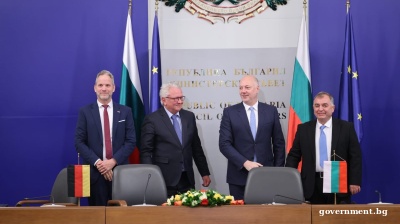
Bulgaria signs landmark deal with Rheinmetall to build ammunition plant
Investment reflects Bulgaria’s growing role in Europe’s rearmament drive and Nato’s efforts to strengthen regional defence supply chains and cut reliance on external suppliers.

US-China trade talks deliver breakthrough as markets rally ahead of Trump-Xi meeting at APEC
How and if China will react to a US-Japan rare earths deal remains to be seen but Beijing has said it will suspend its restrictions on rare earth metal exports in what is a move likely to ease pressure on the US tech and defence sectors.
